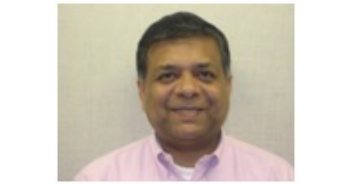Editor’s Note: Welcome to our weekly Reality Check column where C-level executives and advisory firms from across the mobile industry share unique insights and experiences.
This is the third in a three-part series of “Reality Check” articles outlining some of the key concepts behind 5G and NSN’s vision for this new generation of mobile technology.
What is 5G? That seems to be the big industry question discussed in recent months. For those of us in mobile broadband, we may not know exactly what it will be, but we do know that demand for capacity and network quality is growing fast, and we’ll need to be able to boost network capacity by more than 10,000 times beyond 2020. As such, high peak and edge data rates and low latencies to support video, gaming and augmented reality applications will play a part in defining 5G technology. It will stretch far beyond 2020 and will enable a more scalable service experience on demand whereby people and machines will obtain a virtual zero latency gigabit experience where and when it matters.
The networks business of Nokia, along with the NYU Wireless Research Center at the Polytechnic School of Engineering at New York University, jointly organized the first Brooklyn 5G Summit at the end of April to understand and frame 5G technology. More than 150 wireless communications experts and researchers came to Brooklyn to share their latest research results and thoughts on the subject.
The summit’s main focus was to discuss the need for new spectrum and understand its usability, with an emphasis on small cells in new spectrum bands for 6 GHz to 100 GHz. Due to limited spectrum assets below 6 GHz, the current 3G/4G technologies (HSPA, LTE and LTE-A) are unlikely to provide sufficient capacity to accommodate traffic growth higher than 1000-fold. To support growth beyond 2020, there is a need for new spectrum at higher frequency bands. Currently, there is ongoing research in many companies and universities around the world to address the channel characteristics above 6 GHz but more is needed.
It was noted that 5G will not be a completely new standalone radio technology, but an integration of novel and existing access technologies such as LTE-A and Wi-Fi. One of the focal points of 5G is ultra dense deployments which will use spectrum from 3.5 GHz to 100 GHz, thus facilitating both centimeter wave (3.5 GHz to 30 GHz) and millimeter wave (30 GHz to 100 GHz) options.
There were also discussions around regulatory issues, requirements and technologies for 5G, propagation and channel modeling at new spectrum bands from 6 GHz to 100 GHz, and innovative architectures and systems needed to build out the capacity demands of tomorrow. All of these aspects were included in the summit’s presentations, but the most attention was drawn to channel measurements and modeling at millimeter wave bands.
There was a general consensus that more spectrum (available at higher frequency bands), multi-antenna technologies, and small cells are going to be the essential technology components in achieving the 5G targets. It was also made clear that there are no show stoppers at millimeter wave bands for access and backhaul deployments for small cells based on current measurement and simulation data.
During the summit’s closing panel session, chaired by Dr. Takehiro Nakamura of NTT DoCoMo, industry experts discussed how to create a partnership for 5G channel models. It was the common understanding of the group that more measurements and further work on channel modeling are needed and collaboration between the industry and academia should continue to address the issues. Dr. Nakamura presented a tentative timeline for 5G standardization in 3GPP with specification work being addressed in the Rel-15 (e.g. 2018) timeframe. The big driver for the 2018 timeframe is to have a commercial 5G system deployable for the Japan 2020 Olympic games. It was also the general understanding of the participants that new spectrum opportunities below 6 GHz should be addressed at the World Radiocommunication Conference 2015 (WRC-15) while spectrum above 6 GHz will be brought up in WRC-18/19.
It is our expectation that the summit will be an annual event to focus on specific 5G issues, and April’s gathering was a good start for increased networking around these targeted 5G topics. But, the conversations and research should not stop there. Attendees were encouraged to build upon the momentum of the conference and start defining the channel model and measurements for 5G systems, possibly with a joint data base for measurements conducted in different regions of the globe. Now is the time to determine the kind of system we need to handle the applications and services needed for the future.
Dr. Amitabha Ghosh is head of North America Radio Systems within the Technology and Innovation office of Nokia’s Networks business. He is currently working on 3GPP, LTE-Advanced and 5G technologies. His research interests are in the areas of digital communications, signal processing and wireless communications. Dr. Ghosh joined Motorola in 1990 after receiving his Ph.D in Electrical Engineering from Southern Methodist University in Dallas. While at Motorola, he worked on multiple wireless technologies starting from IS-95, CDMA2000, 1xEV-DV/1XTREME, 1xEV-DO, UMTS, HSPA, 802.16e/WiMAX/802.16m, Enhanced EDGE and 3GPP LTE. Dr. Ghosh has 60 issued patents and numerous external and internal technical papers. He is a senior member of IEEE and co-author of the book titled “Essentials of LTE and LTE-A”.

Reality Check: Defining the future of 5G wireless
ABOUT AUTHOR
